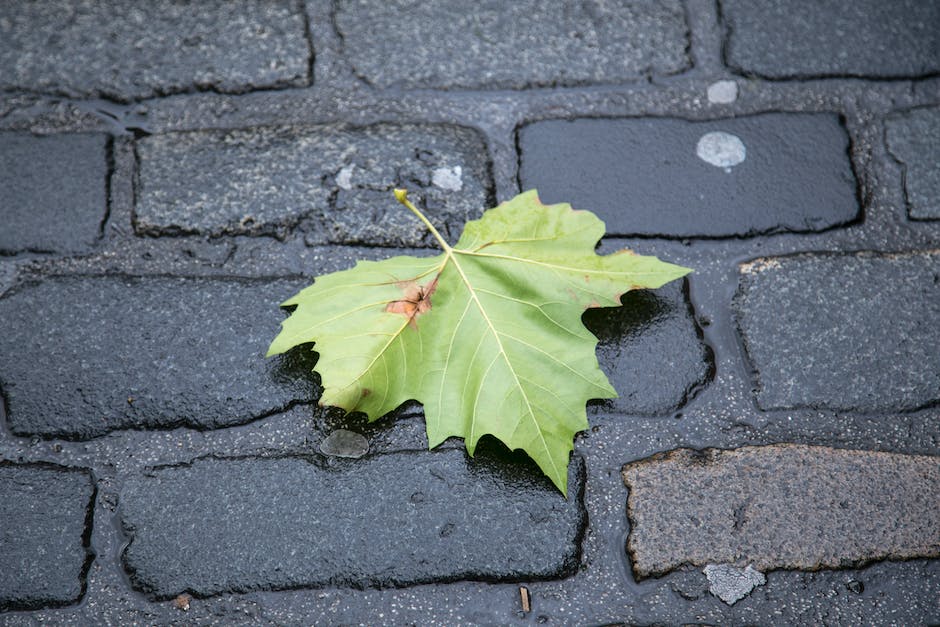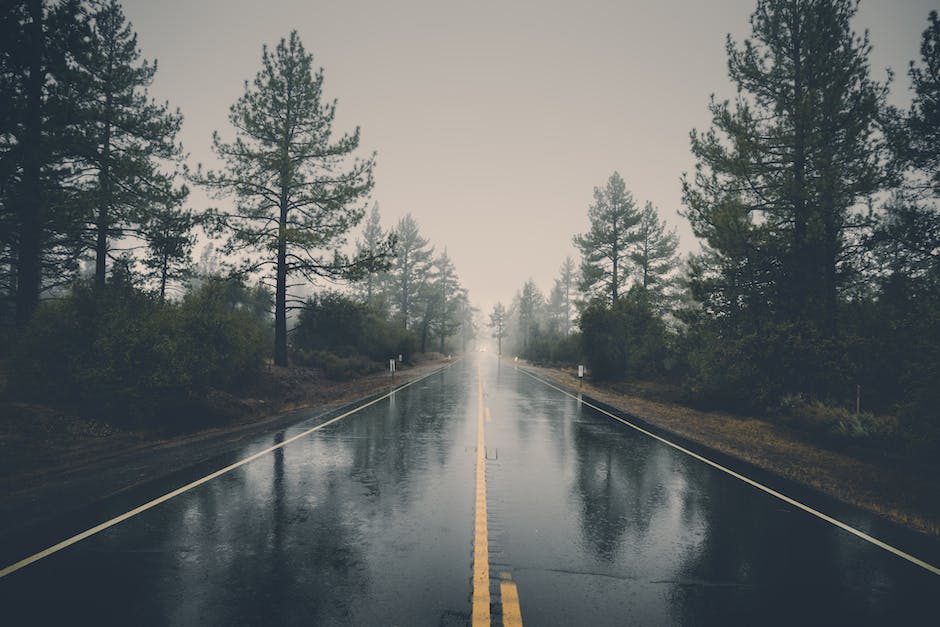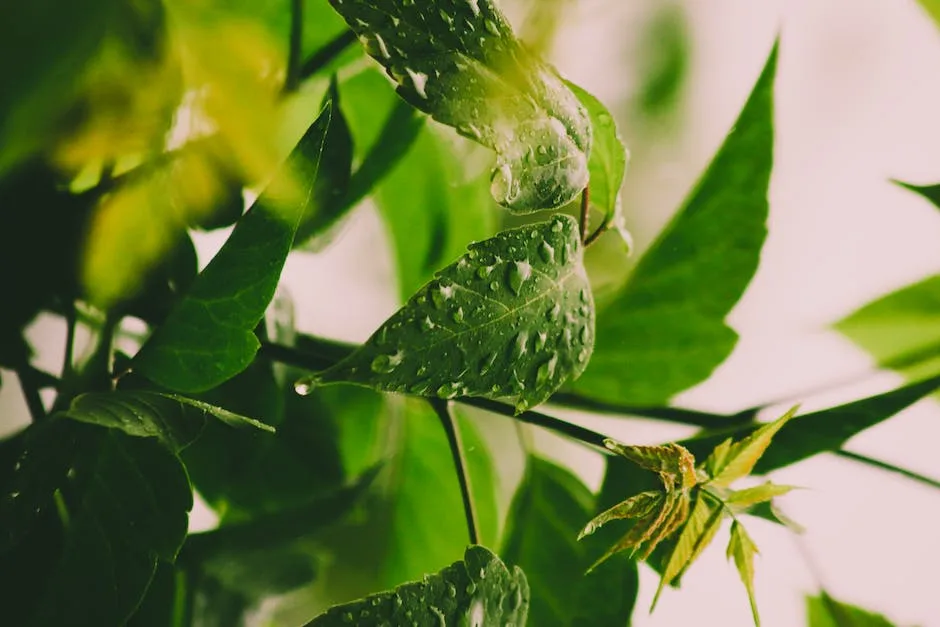In general, maple trees do not do well in wet soil. Wet soil can cause the roots of the tree to rot, which can eventually kill the tree. If you live in an area with a lot of rainfall, it is important to choose a different tree species for your landscape.
From what I can find, it appears that maple trees do well in wet soil as long as the roots are not waterlogged. They like moist soil, but not soggy soil. If the roots are sitting in water, they will rot and the tree will die.
Do maple trees tolerate wet soil?
It is important to keep the soil around maple trees moist, as they need it for tree and soil health. If you cannot plant them in a shaded, damp area, you will need to water them frequently.
Red maples are one of the most adaptable trees out there. They can do well in sunny or shady spots, dry or wet soil, and high or low elevation. Their adaptable roots help them to cope with differing soil types. If they are placed in wet soil, they grow a short taproot and extensive lateral roots to soak up water at the surface. This makes them very versatile and able to thrive in a variety of conditions.
What type of tree grows well in wet soil
There are a variety of hardy trees and shrubs that can survive in wet areas. Some of these include birch, willow, tupelo, bald cypress, hackberry, and sweetgum. For tropical areas, palm trees and water ash are excellent choices.
The Big Leaf Maple, Mountain Maple, and Vine Maple are all common varieties of maple trees. They thrive near sources of water, such as rivers and creeks, and make a great addition to any sloping landscape when planted properly.
Can a Japanese maple grow in wet soil?
Japanese maples are incredibly versatile trees that can grow in a wide range of soil conditions. As long as the soil doesn’t stay soggy wet, they will be fine. The better the soil conditions are, the better they can withstand other poor growing conditions, such as wind, water related problems, heat stress, insect pests, and diseases.
Japanese Maple trees prefer a location that is sheltered from the hot afternoon sun. All other varieties of maple trees grow best in a full sun location.
Can you plant trees in waterlogged soil?
If your soil is heavy and clay-like, you may need to improve the drainage before planting trees. This can be done by incorporating bulky organic matter into the soil, over as large an area as possible. This will help to improve the soil’s ability to hold moisture, and help to prevent the tree’s roots from sitting in water.
Acidic loam is ideal for planting ericaceous ( heather family) plants as it contains organic matter which enriches the soil. Other soils can be too dense and compacted, preventing the necessary oxygen and water from reaching the roots of the plant. In addition, acidic loam helps to create the environment that heathers need in order to thrive.
Can sugar maple tolerate wet soil
The sugar maple tree (Acer saccharum) grows best in deep, well-drained, acidic to slightly alkaline soil. It prefers moist soil conditions but has moderate drought tolerance. Sugar maple is a slow-growing tree, reaching a height of 40–50′ and a spread of 30–40′ at maturity. It is one of the most shade-tolerant trees, making it a good choice for planting under larger trees.
These tolerant species are especially good at living on saturated sites during the growing season because they can withstand long periods of time without water. This makes them ideal for places where flooding is a regular occurrence.
What grows well in very wet areas?
Looking for plants that can tolerate wet soil? Here are some of the best options:
Bergenia: Also known as Piqsqueak, this pretty groundcover tolerates wet soil well.
Bottlebrush Buckeye: Aesculus parviflora is a great option for wet soil.
Astilbe: Actaea racemosa is a good choice for wet soil.
Bugleweed: Ajuga reptans is a great groundcover for wet soil.
Blue Flag Iris: Iris versicolor is a beautiful option for wet soil.
Trumpet Creeper: Campsis radicans is a good choice for wet soil.
Carolina Jessamine: Gelsemium sempervirens is a great option for wet soil.
Looking for a way to add some life to your soggy spots in the yard? Check out these 14 wet-soil perennials that will thrive in those areas! From Cardinal Flower to Pickerel Weed, there are a variety of beautiful plants to choose from that will bring some color and interest to your yard.
What is the difference between a maple tree and a red maple tree
These are two different types of maples. The Red Maple is more toothed, while the Sugar Maple has smoother edges. The Red Maple is also green on the top and a light greenish white on the underside. They both turn a brilliant red in autumn.
If your Japanese Maple’s leaves are brown or black at the tips, it could be a sign of over watering. Make sure to check the soil moisture and only water when necessary. Over watering is a common cause of decline in these trees.
Do maple trees do well in clay soil?
Most maple trees are adaptable to many soil types, including clay. They prefer a well-drained but moist soil of average fertility. Though some maple varieties will grow in swamps, others will handle periods of wet soil due to heavy rainfall. But constantly wet soil could be problematic.
Japanese maples are a beautiful addition to any garden, but they require specific growing conditions to thrive. They prefer soil that is slightly acidic and rich in organic matter, and they need protection from hot, dry winds. While they can tolerate some sun, they are susceptible to leaf scorch in hot, sunny locations. Given the right conditions, Japanese maples will provide years of beauty in your garden.
Is maple a fast growing tree
The red maple tree is prized for its vibrant red-orange leaves that emerge each autumn. In addition to their eye-catching foliage, these trees are also fast-growing. Red maple trees grow up to 24 inches per year, with some reaching nearly 120 feet tall with a 50-foot spread at maturity.
A red maple tree will take several years to reach its full size, but it will provide beautiful color and shade during that time. Keep an eye on your red maple tree and enjoy its colors and shade as it grows!
How long does it take for a maple tree to fully grow
A deciduous tree is a tree that loses its leaves every year. The leaves may fall off the tree all at once, or they may gradually turn yellow and fall off over a period of weeks or months.
Most deciduous trees grow in areas with cold winters and warm summers. They are found in North America, Europe, Asia, and Australia.
The hardiness of a deciduous tree depends on the species. Some deciduous trees can only tolerate cold temperatures down to USDA zone 2, while others can tolerate cold temperatures down to USDA zone 10.
Deciduous trees prefer soil that is moist but well-drained. The ideal time to plant a deciduous tree is in the spring.
Deciduous trees can be found in a variety of sizes, from small shrubs to large trees. The time it takes for a deciduous tree to reach maturity also varies, depending on the species. Some deciduous trees can take up to 30 years to reach full maturity.
This will help the tree to get the water it needs without the water being blocked by the hard pan layer.
Should I plant tree in wet soil
When planting a tree, it is best to plant the tree when the ground is dry or only damp. Trees that aren’t suited for wet soil can drown. Therefore, it is easier for any plant to drown in a wet soil area than elsewhere. Before watering your tree, test the soil up to a few inches to ensure that the ground is not too wet.
Trees need deep waterings to encourage their roots to grow deep into the soil. SHALLOW waterings only encourage roots to stay near the surface where they are more likely to dry out.
What conditions do maples like
When planting a maple, it is important to choose a location that is out of range of harsh winds and hot sun. Maples prefer a sheltered position in full to partial shade, with protection from the hot midday sun. By giving your maple the right conditions, you will ensure that it thrives and provides you with years of enjoyment.
Mulching helps provide protection to tree roots from extreme temperature changes and provides a buffer against drought conditions. Excessive heat can be detrimental to tree growth, so it’s important to provide some shade if possible. Morning sun and afternoon shade is ideal for maple trees.
Can a maple tree get too much sun
Japanese Maples will do well in a location with direct morning sun and shade in the afternoon Hot afternoon summer sun exposure on many varieties of red Japanese Maples can result in sun burned leaves. I can personally attest to this.
Though hard maple can have straight grain, it is more commonly seen with a curly or quilted grain pattern. The texture is fine and even. Hard maple is resistant to rot, but is susceptible to insect attack.
What tree absorbs the most water
There are a few trees that are best at absorbing water and they are: Red Maple, Ash, Black Gum, White Cedar, and River Birch. All of these trees have deep, dense roots that help them to absorb water quickly and efficiently. They are all also tall trees, which means that they can take in a lot of water at one time.
If you’re looking for 10 plants that can tolerate poor soils, consider the following: Fire Chief™ Arborvitae, ‘Orange Rocket’ Barberry, Spring Sonata™ and Rosalinda® Indian Hawthornes, Prime-Ark® ‘Freedom’ Thornless Blackberry, ‘Sunset Flash’ Gaillardia, Ultra Violet™ Buddleia, Miss Lemon™ Abelia, and Coppertop™ Sweet Viburnum.
Final Words
Yes, maple trees do quite well in wet soils. In fact, they are quite tolerant of flooding and heavy rains.
Many people believe that maple trees do not do well in wet soil, but this is not the case. Maple trees are actually very tolerant of wet conditions and can even thrive in them. The key is to choose the right variety of maple tree for your particular climate and soil conditions. For example, sugar maples do well in wetter conditions than red maples. If you have wet conditions in your area, talk to a local nursery or tree specialist to find the best maple tree for your needs.
I’ve always been drawn to trees.
As a kid, I spent most of my free time outside, climbing, exploring, and trying to figure out the names of the trees around me.
That early curiosity eventually led me to study arboriculture and horticulture at Michigan State.
Later, I completed a degree in forestry at the University of Michigan.
I’ve been working in tree care and education ever since.
These days, I enjoy helping people learn more about the trees in their own backyards.
How they grow, how to care for them, and why they matter.
You don’t need to be an expert to appreciate trees.
A little curiosity goes a long way.
